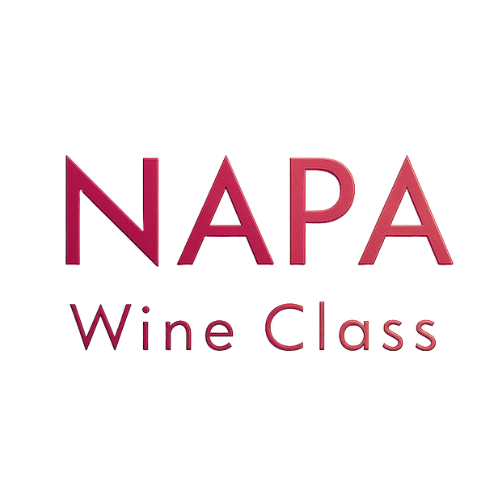Jun 24
/
Napa Wine Class
Diamond Mountain District AVA: Napa Valley’s Volcanic, Age-Worthy Secret
High above the hustle of Napa Valley’s valley floor, nestled in the Mayacamas Mountains near the town of Calistoga, lies the Diamond Mountain District AVA—a wine region known for its bold yet elegant Cabernet Sauvignon, volcanic soils, and exceptional aging potential. Designated an American Viticultural Area in 2001, this AVA may be small in size, but its wines and geology make a powerful statement.
Where Is Diamond Mountain District?
Located in the northwestern corner of Napa Valley, Diamond Mountain District sits along the Napa-Sonoma border. With vineyards planted between 400 and 2,200 feet in elevation, this mountain AVA benefits from warmer conditions than its eastern counterparts like Howell Mountain, but still receives the cooling influences of marine air and fog funneled through narrow valleys.
Its name comes from the volcanic glass crystals—once mistaken for diamonds—found in the region’s rocky soils.
Climate: Elevated and Sunny, But Balanced
The climate of Diamond Mountain District is shaped by its mountain terrain, which provides consistent sun exposure throughout the day, but moderates temperatures due to altitude and afternoon breezes.
Key climate attributes include:
Warm, sun-soaked days ideal for ripening red grapes
Cool evenings, preserving acidity and aromatics
Less fog and wind compared to lower-lying AVAs
Extended growing season, promoting even ripening
This combination allows grapes to reach full phenolic maturity while maintaining structural balance and freshness.
Terroir: Volcanic Soils That Challenge and Inspire
Soils in Diamond Mountain District are predominantly volcanic in origin, made up of:
Reddish-brown volcanic ash and tuff
Decomposed basalt and iron-rich rock
Gravelly loam and clay subsoils
These soils are low in fertility, which naturally limits vine vigor and yields. This stresses the vines just enough to produce smaller berries with thicker skins—ideal for wines with deep color, high tannin, and intense flavor concentration.
Grape Varieties and Wine Characteristics
Diamond Mountain’s conditions are best suited for robust red varietals, most notably:
Cabernet Sauvignon
The hallmark grape of the AVA—structured, deeply colored, and built to age. Common flavor notes include black cherry, cassis, mocha, cedar, and mountain herbs.
Merlot
Adds lush texture and red fruit to many blends, softening the Cabernet’s bold tannins.
Cabernet Franc & Petit Verdot
Often used in Bordeaux-style blends to add spice, floral lift, and structure.
Chardonnay (limited plantings)
Occasionally found in cooler pockets, offering richness balanced by mountain acidity.
Diamond Mountain wines are known for their tannic backbone, mineral complexity, and slow evolution in bottle, often showing best after several years of cellaring.
Visiting Diamond Mountain: Serenity and Substance
Because of its remote location and smaller number of estates, Diamond Mountain is a place for quiet, focused tasting experiences. Many wineries are appointment-only and offer vineyard or cave tours with sweeping mountain views.
Notable producers in or near the AVA include:
Diamond Creek Vineyards – Pioneering estate known for age-worthy single-vineyard Cabernet
Lokoya – Mountain-only producer specializing in ultra-premium Cabernet Sauvignon
Seaver Vineyards – Estate Cabernet from Hall of Famer Tom Seaver’s hillside vineyard
Von Strasser Winery – Early champion of the AVA and volcanic-soil winemaking
Castello di Amorosa – While just outside the AVA, it sources fruit from Diamond Mountain vineyards
Visiting this AVA offers a deeper look into mountain viticulture and the artistry of craft winemaking at elevation.
Who we are
Napa Wine Class is more than just a knowledge base—it's a passionate movement to share the beauty, culture, and craftsmanship of Napa Valley with the world.
Get in touch
-
1300 First Street, Suite 368 Napa, CA 94559
-
mbv@napawineclass.com
Disclaimer:
All content provided by MBV Wine Media—including but not limited to courses, videos, articles, webinars, digital guides, and instructional materials—is intended solely for educational and informational purposes. No alcoholic beverages are sold, served, promoted, or provided through any part of this program. The inclusion of wine-related information, tastings, or evaluations does not constitute an offer to sell, advertise, or solicit the purchase of alcoholic beverages. Any references to wines or tasting rooms are for academic discussion only and are not intended to encourage or facilitate commercial transactions.
Napa Wine Class is a digital content hub curated by MBV Wine Media, an independent wine education platform.
Napa Wine Class is a digital content hub curated by MBV Wine Media, an independent wine education platform.
© 2025 Vescovi Industries, LLC – All rights reserved. Produced by MBV Wine Media.
Join the Napa Wine Class Community!
Get the latest on upcoming classes and wine educational events in Napa Valley!
Thank you!
